Influence of Vacuum Level on Heat Transfer Characteristics of Maglev Levitation Electromagnet Module
Abstract
:1. Introduction
2. Numerical Methods
2.1. Physical Model and Boundary Conditions
2.2. Governing Equations
2.3. Numerical Procedure
2.4. Domain Discretization
3. Experimental Validation
3.1. Experimental Setup
3.2. Results Comparison and Analysis
4. Results and Discussion
4.1. Evolution of EMU Surface Temperature Profile during Heating Process
4.2. Influence of Vacuum Level on Temperature Distribution of EMU Surface and Fluid Field
4.3. Influence of Vacuum Level on Heat Transfer Characteristics
5. Conclusions
Author Contributions
Funding
Acknowledgments
Conflicts of Interest
References
- Tian, H.Q. Formation mechanism of aerodynamic drag of high-Speed train and some reduction measures. J. Cent. South Univ. Technol. 2009, 1, 166–171. [Google Scholar] [CrossRef]
- Zhang, L.; Yang, M.-Z.; Liang, X.-F. Experimental study on the effect of wind angles on pressure distribution of train streamlined zone and train aerodynamic forces. J. Wind Eng. Ind. Aerodyn. 2018, 174, 330–343. [Google Scholar] [CrossRef]
- Wang, T.; Wu, F.; Yang, M.; Ji, P.; Qian, B. Reduction of pressure transients of high-Speed train passing through a tunnel by cross-section increase. J. Wind Eng. Ind. Aerodyn. 2018, 183, 235–242. [Google Scholar] [CrossRef]
- Kim, T.-K.; Kim, K.-H.; Kwon, H.-B. Aerodynamic characteristics of a tube train. J. Wind Eng. Ind. Aerodyn. 2011, 99, 1187–1196. [Google Scholar] [CrossRef]
- Ma, J.; Zhou, D.; Zhao, L.; Zhang, Y.; Zhao, Y. The approach to calculate the aerodynamic drag of maglev train in the evacuated tube. J. Mod. Transp. 2013, 21, 200–208. [Google Scholar] [CrossRef] [Green Version]
- Jia, W.; Wang, K.; Cheng, A.; Kong, X.; Cao, X.; Li, Q. Air flow and differential pressure characteristics in the vacuum tube transportation system based on pressure recycle ducts. Vacuum 2018, 150, 58–68. [Google Scholar] [CrossRef]
- Deng, Z.; Zhang, W.; Zheng, J.; Ren, Y.; Jiang, D.; Zheng, X.; Zhang, J.; Gao, P.; Lin, Q.; Song, B.; et al. A High-Temperature Superconducting Maglev Ring Test Line Developed in Chengdu, China. IEEE Trans. Appl. Supercond. 2016, 26, 1–8. [Google Scholar] [CrossRef]
- Lee, H.W.; Park, C.B.; Lee, J. Improvement of thrust force properties of linear synchronous motor for an ultra-High-Speed tube train. IEEE Trans. Magn. 2011, 47, 4629–4634. [Google Scholar] [CrossRef]
- Bergqvist, A.; Lin, D.; Zhou, P. Temperature-Dependent vector hysteresis model for permanent magnets. IEEE Trans. Magn. 2014, 50, 345–348. [Google Scholar] [CrossRef]
- Zhou, P.; Lin, D.; Xiao, Y.; Lambert, N.; Rahman, M.A. Temperature-Dependent demagnetization model of permanent magnets for finite element analysis. IEEE Trans. Magn. 2012, 48, 1031–1034. [Google Scholar] [CrossRef]
- Huang, Z.; Deng, Z.; Jin, L.; Hong, Y.; Zheng, J.; Rodriguez, E.F. Numerical simulation and experimental analysis on the AC Losses of HTS bulks levitating under a varying external magnetic field. IEEE Trans. Appl. Supercond. 2019, 29, 1–5. [Google Scholar] [CrossRef]
- Del-Valle, N.; Sanchez, A.; Navau, C.; Chen, D.X. A theoretical study of the influence of superconductor and magnet dimensions on the levitation force and stability of maglev systems. Supercond. Sci. Technol. 2008, 21, 125008. [Google Scholar] [CrossRef]
- Niu, J.; Sui, Y.; Yu, Q.; Cao, X.; Yuan, Y. Numerical study on the impact of Mach number on the coupling effect of aerodynamic heating and aerodynamic pressure caused by a tube train. J. Wind Eng. Ind. Aerodyn. 2019, 190, 100–111. [Google Scholar] [CrossRef]
- Zhou, P.; Zhang, J.; Li, T.; Zhang, W. Numerical study on wave phenomena produced by the super high-Speed evacuated tube maglev train. J. Wind Eng. Ind. Aerodyn. 2019, 190, 61–70. [Google Scholar] [CrossRef]
- Vermilyea, M.E.; Minas, C. A cryogen-Free superconducting magnet design for maglev vehicle applications. IEEE Trans. Appl. Supercond. 1993, 444–447. [Google Scholar] [CrossRef]
- Mizuno, K.; Ogata, M.; Hasegawa, H. Manufacturing of a REBCO racetrack coil using thermoplastic resin aiming at Maglev application. Phys. C Supercond. Its Appl. 2015, 518, 101–105. [Google Scholar] [CrossRef]
- Chung, Y.D.; Kim, D.W.; Lee, C.Y. Transfer Efficiency and Cooling Cost by Thermal Loss based on Nitrogen Evaporation Method for Superconducting MAGLEV System. J. Phys. Conf. Ser. 2017, 871, 012095. [Google Scholar] [CrossRef] [Green Version]
- Rahimi, A.; Dehghan Saee, A.; Kasaeipoor, A.; Hasani Malekshah, E. A comprehensive review on natural convection flow and heat transfer: The most practical geometries for engineering applications. Int. J. Numer. Methods Heat Fluid Flow. 2019, 29, 834–877. [Google Scholar] [CrossRef]
- Ross-Jones, J.; Gaedtke, M.; Sonnick, S.; Rädle, M.; Nirschl, H.; Krause, M.J. Conjugate heat transfer through nano scale porous media to optimize vacuum insulation panels with lattice Boltzmann methods. Comput. Math. Appl. 2019, 77, 209–221. [Google Scholar] [CrossRef]
- Garceau, N.; Bao, S.; Guo, W. Heat and mass transfer during a sudden loss of vacuum in a liquid helium cooled tube-Part I: Interpretation of experimental observations. Int. J. Heat Mass Transf. 2019, 129, 1144–1150. [Google Scholar] [CrossRef]
- Zhang, X.; Xie, H.; Fujii, M.; Takahashi, K.; Ikuta, T.; Ago, H.; Abe, H.; Shimizu, T. Experimental study on thermal characteristics of suspended platinum nanofilm sensors. Int. J. Heat Mass Transf. 2006, 49, 3879–3883. [Google Scholar] [CrossRef]
- Zanino, R.; Richard, L.S.; Subba, F.; Corpino, S.; Izquierdo, J.; Le Barbier, R.; Utin, Y. CFD analysis of a regular sector of the ITER vacuum vessel. Part II: Thermal-Hydraulic effects of the nuclear heat load. Fusion Eng. Des. 2013, 88, 3248–3262. [Google Scholar] [CrossRef] [Green Version]
- De Beer, M.; Du Toit, C.G.; Rousseau, P.G. A methodology to investigate the contribution of conduction and radiation heat transfer to the effective thermal conductivity of packed graphite pebble beds, including the wall effect. Nucl. Eng. Des. 2017, 314, 67–81. [Google Scholar] [CrossRef]
- Luo, Z.; Zuo, J. Conjugate heat transfer study on a ventilated disc of high-Speed trains during braking. J. Mech. Sci. Technol. 2014, 28, 1887–1897. [Google Scholar] [CrossRef]
- Ji, P.; Wu, F.; Zhang, G.; Yin, X.; Vainchtein, D. A novel numerical approach for investigation of the heat transport in a full 3D brake system of high-speed trains. Numer. Heat Transf. Part A Appl. 2019, 75, 824–840. [Google Scholar] [CrossRef]
- Maakala, V.; Järvinen, M.; Vuorinen, V. Computational fluid dynamics modeling and experimental validation of heat transfer and fluid flow in the recovery boiler superheater region. Appl. Therm. Eng. 2018, 139, 222–238. [Google Scholar] [CrossRef]
- Baudoin, A.; Saury, D.; Boström, C. Optimized distribution of a large number of power electronics components cooled by conjugate turbulent natural convection. Appl. Therm. Eng. 2017, 124, 975–985. [Google Scholar] [CrossRef]
- Tao, Y.; Yang, M.; Qian, B.; Wu, F.; Wang, T. Numerical and Experimental Study on Ventilation Panel Models in a Subway Passenger Compartment. Engineering 2019, 5, 329–336. [Google Scholar] [CrossRef]
- He, Y.L.; Liu, Q.; Li, Q.; Tao, W.Q. Lattice Boltzmann methods for single-Phase and solid-Liquid phase-Change heat transfer in porous media: A review. Int. J. Heat Mass Transf. 2019, 129, 160–197. [Google Scholar] [CrossRef] [Green Version]
- Goodarzi, M.; D’Orazio, A.; Keshavarzi, A.; Mousavi, S.; Karimipour, A. Develop the nano scale method of lattice Boltzmann to predict the fluid flow and heat transfer of air in the inclined lid driven cavity with a large heat source inside, Two case studies: Pure natural convection & mixed convection. Phys. A Stat. Mech. Its Appl. 2018, 509, 210–233. [Google Scholar] [CrossRef]
- Shadloo, M.S.; Oger, G.; Le Touzé, D. Smoothed particle hydrodynamics method for fluid flows, towards industrial applications: Motivations, Current state, And challenges. Comput. Fluids 2016, 136, 11–34. [Google Scholar] [CrossRef]
- Fu, Z.; Yu, X.; Shang, H.; Wang, Z.; Zhang, Z. A new modelling method for superalloy heating in resistance furnace using FLUENT. Int. J. Heat Mass Transf. 2019, 128, 679–687. [Google Scholar] [CrossRef]
- Oh, Y.W.; Choi, Y.S.; Ha, M.Y.; Min, J.K. A numerical study on the buoyancy effect around slanted-pin fins mounted on a vertical plate (Part-I: Laminar natural convection). Int. J. Heat Mass Transf. 2019, 132, 731–744. [Google Scholar] [CrossRef]
- Tsien, H.S. Superaerodynamics, Mechanics of Rarefied Gases. In Collected Works of Hsue-Shen Tsien (1938–1956); Shanghai Jiao Tong University Press: Shanghai, China; Academic Press: Oxford, UK, 2012; ISBN 9780123982773. [Google Scholar]
- Dorfman, A.S. Conjugate Problems in Convective Heat Transfer; CRC Press: Boca Raton, FL, USA, 2009; ISBN 9781420082388. [Google Scholar]
- Pilkington, A.; Rosic, B.; Tanimoto, K.; Horie, S. Prediction of natural convection heat transfer in gas turbines. Int. J. Heat Mass Transf. 2019, 141, 233–244. [Google Scholar] [CrossRef]
- Nakao, K.; Hattori, Y.; Suto, H. Numerical investigation of a spatially developing turbulent natural convection boundary layer along a vertical heated plate. Int. J. Heat Fluid Flow 2017, 63, 128–138. [Google Scholar] [CrossRef]
- Adrian, B. Convection Heat Transfer, 1st ed.; John Wiley & Sons: New York, NY, USA, 2016; pp. 53–101. ISBN 9781493925650. [Google Scholar]
- Janssen, R.J.A.; Henkes, R.A.W.M. Accuracy of finite–Volume discretizations for the bifurcating natural–Convection flow in a square cavity. Numer. Heat Transf. Part B Fundam. 1993, 24, 194–207. [Google Scholar] [CrossRef]
- Maystrenko, A.; Resagk, C.; Thess, A. Structure of the thermal boundary layer for turbulent Rayleigh-Bénard convection of air in a long rectangular enclosure. Phys. Rev. E-Stat. Nonlinear Soft Matter Phys. 2007, 75, 066303. [Google Scholar] [CrossRef] [PubMed] [Green Version]
- Talbot, L.; Cheng, R.K.; Schefer, R.W.; Willis, D.R. Thermophoresis of particles in a heated boundary layer. J. Fluid Mech. 1980, 101, 737–758. [Google Scholar] [CrossRef] [Green Version]
- Kline, S.J. The purposes of uncertainty analysis. J. Fluids Eng. Trans. ASME 1985, 107, 153–160. [Google Scholar] [CrossRef]
- ISO 8990 ISO 8990 Thermal insulation—Determination of steady-State thermal transmission properties—Calibrated and guarded hot box. BSI 1994. [CrossRef]
- Fang, Y.; Eames, P.C.; Norton, B.; Hyde, T.J. Experimental validation of a numerical model for heat transfer in vacuum glazing. Sol. Energy 2006, 80, 564–577. [Google Scholar] [CrossRef]
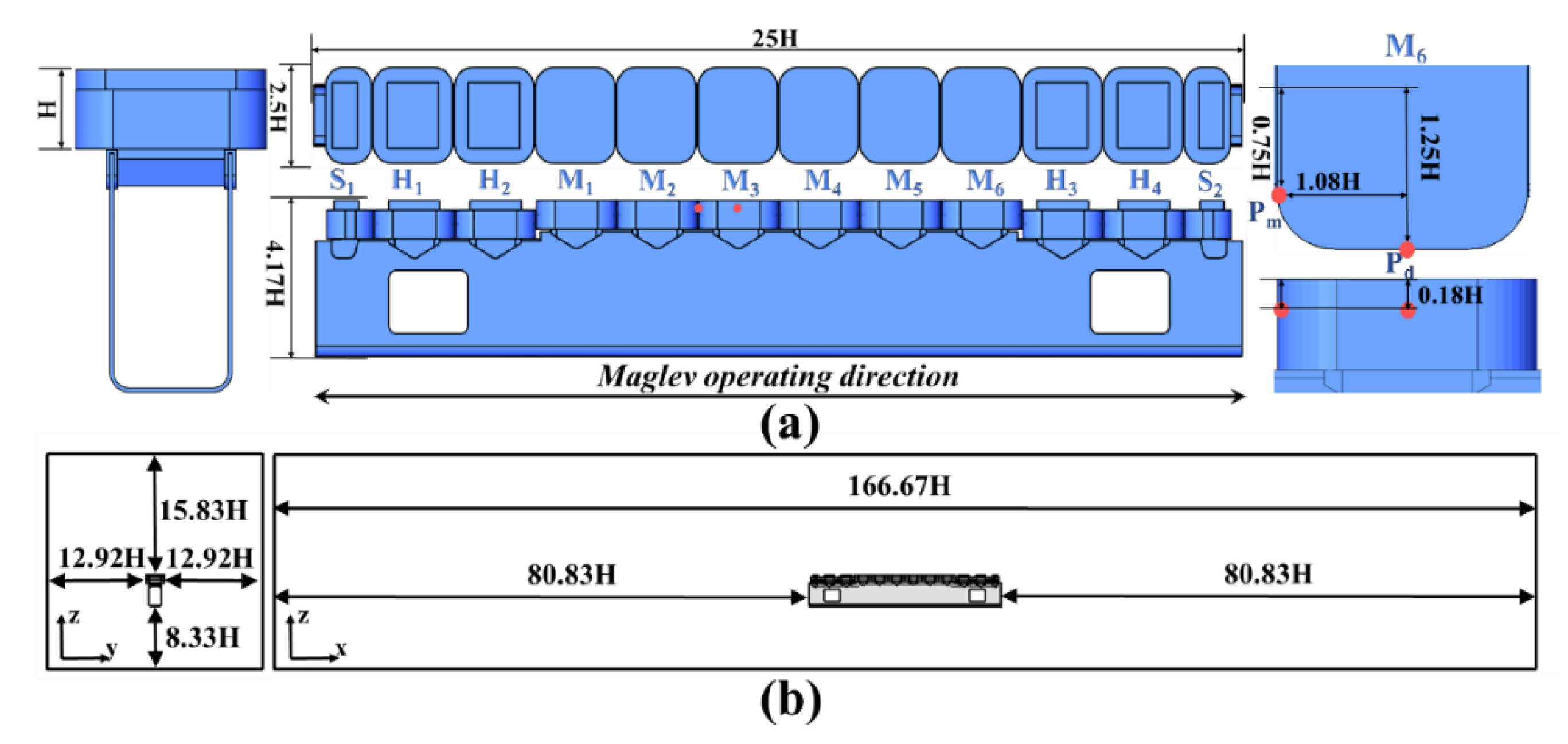
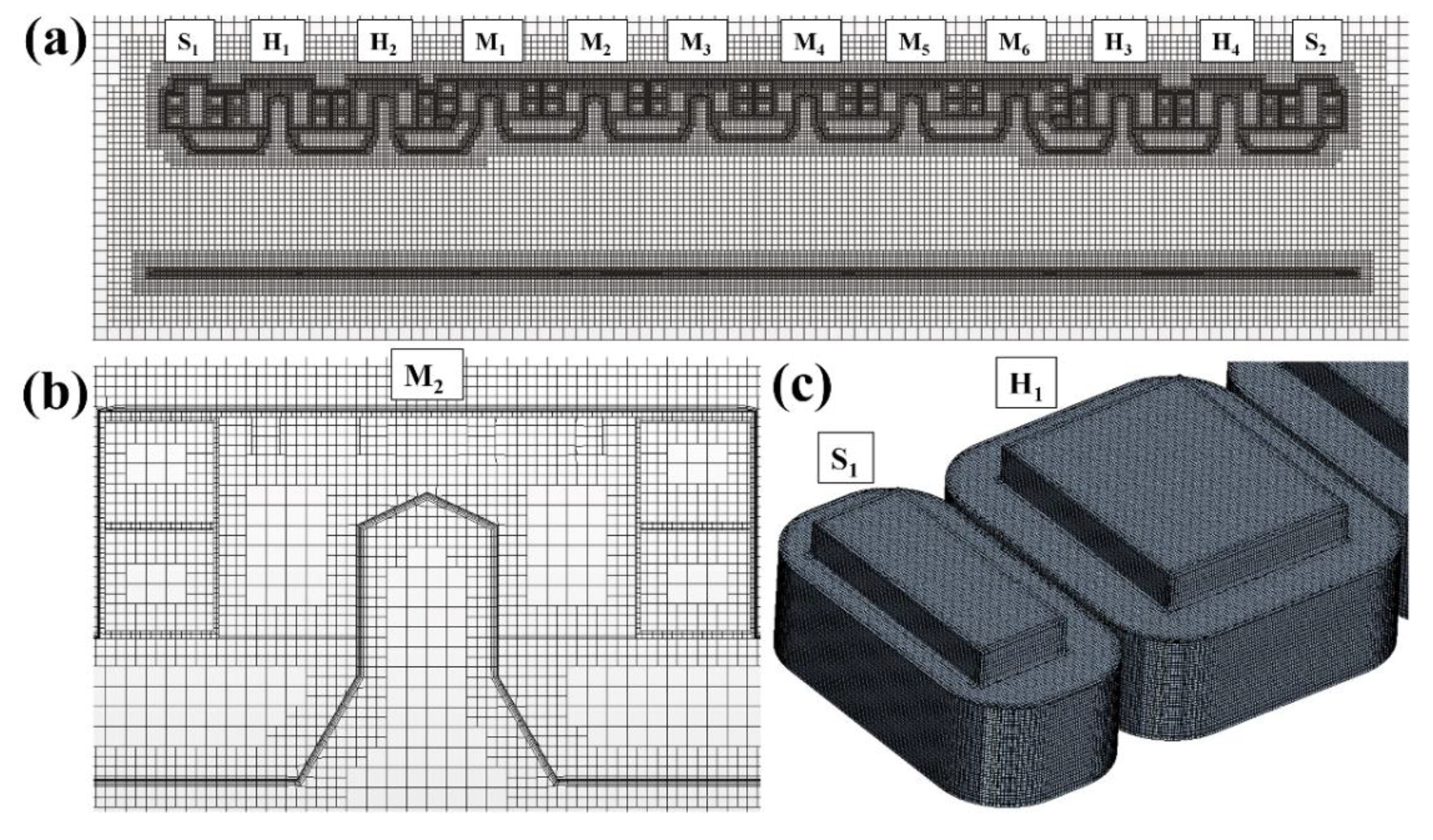
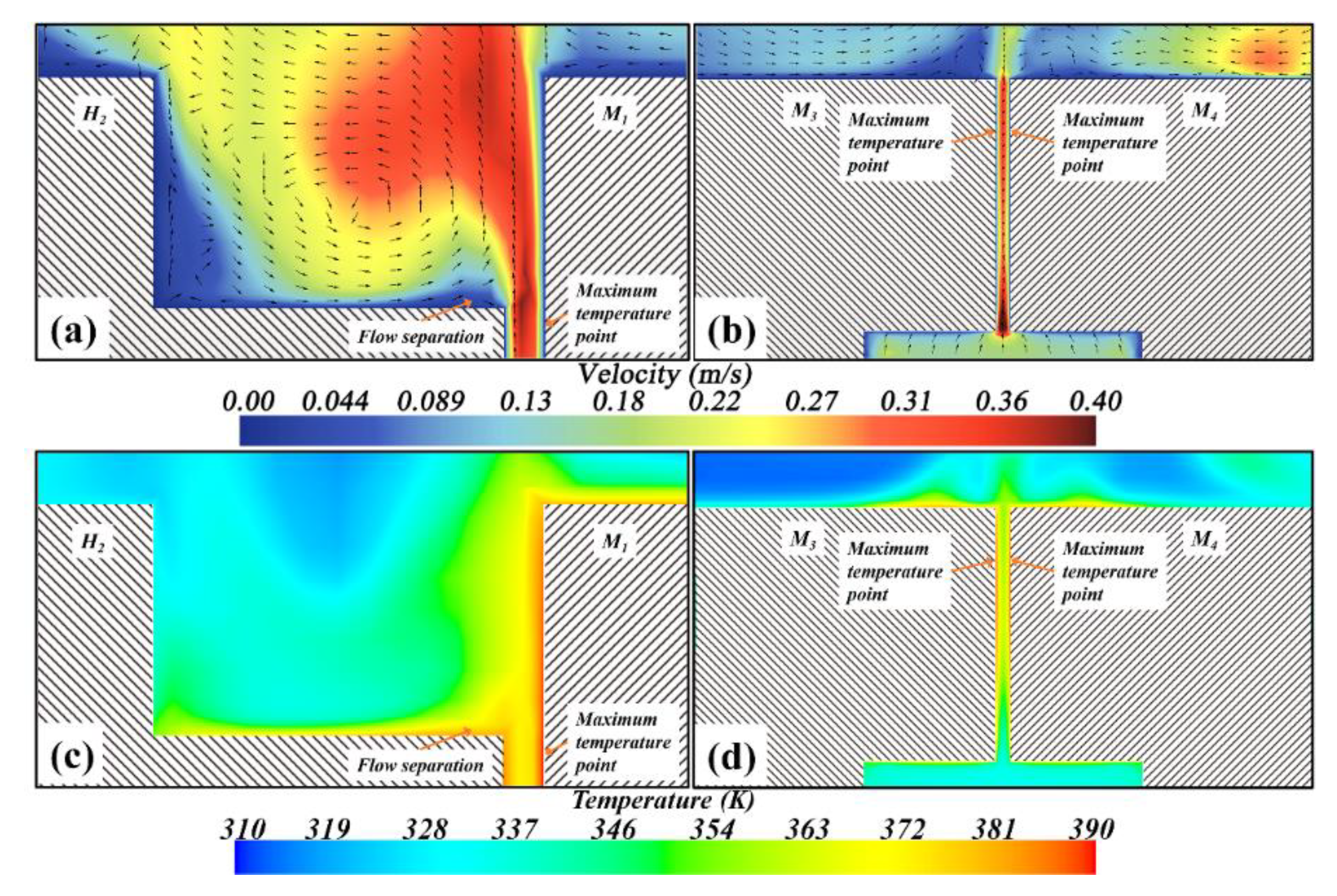

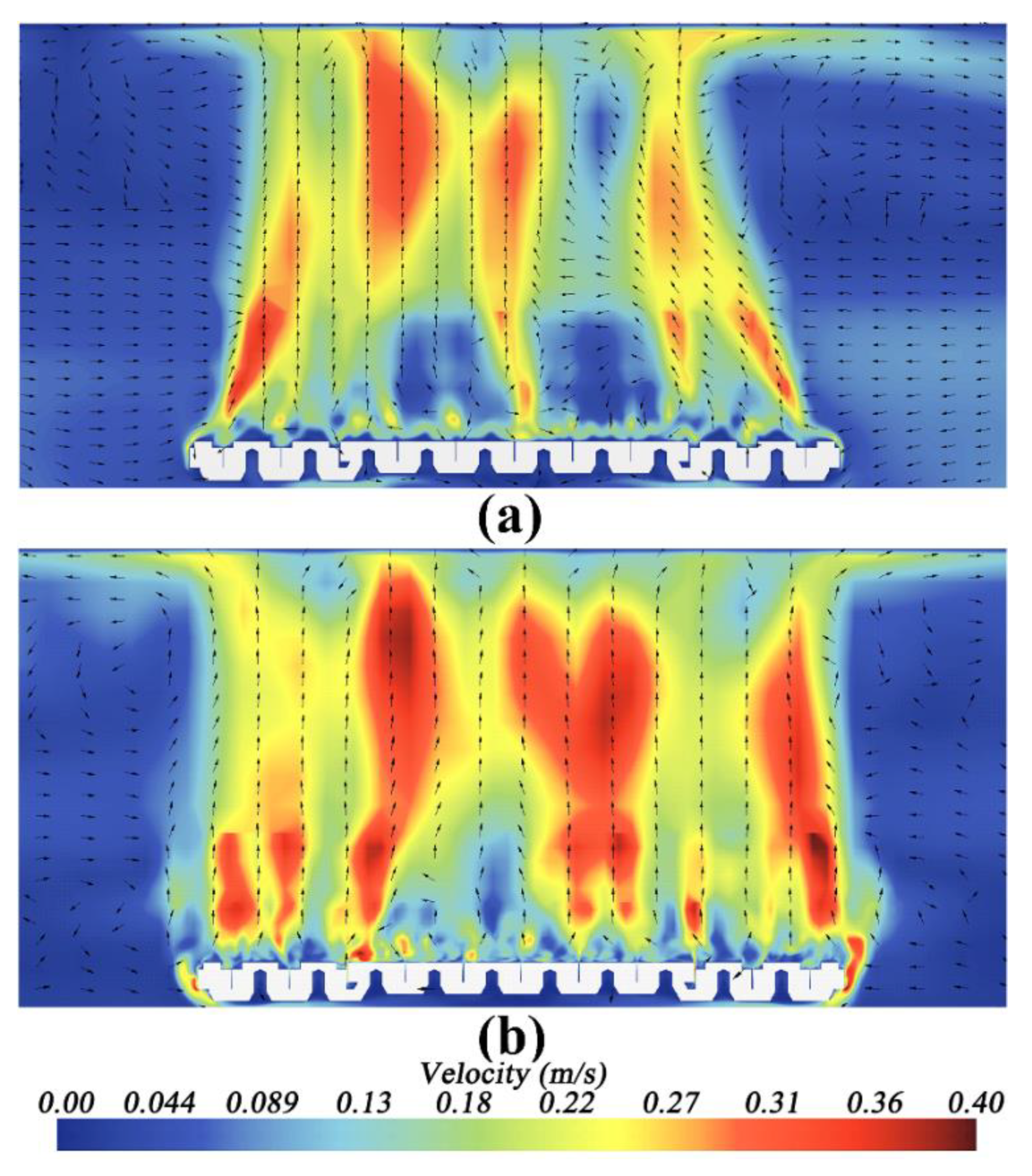

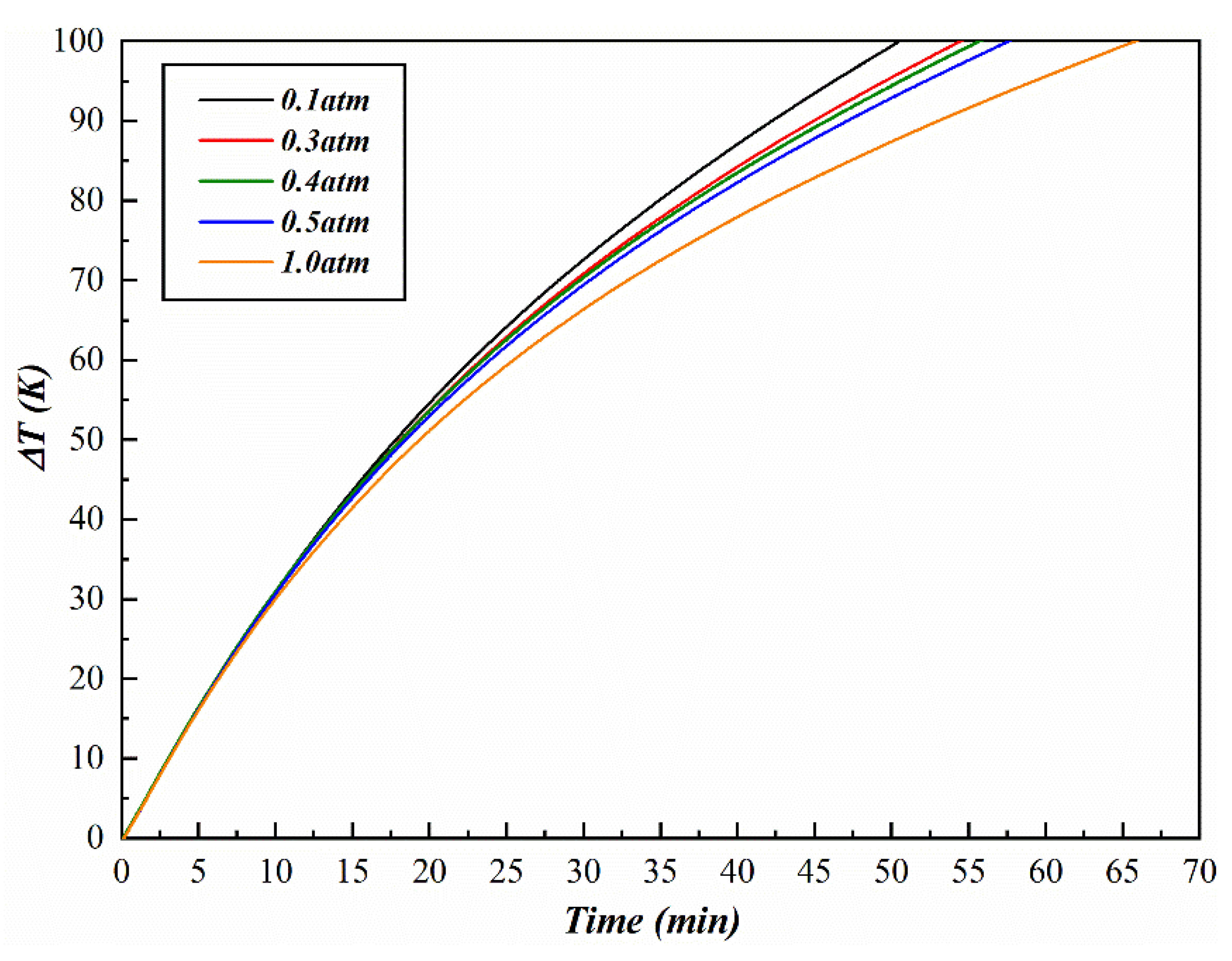
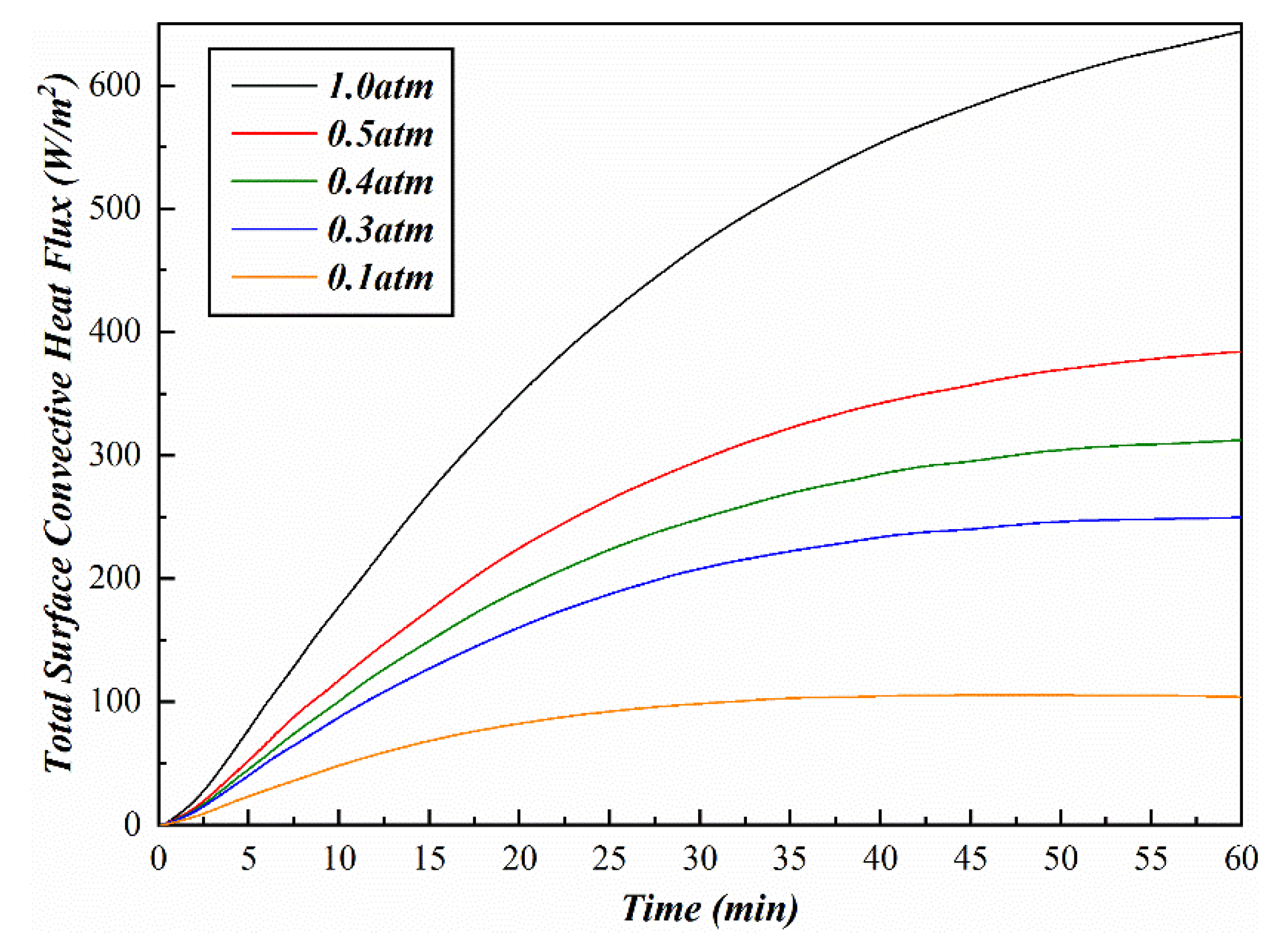
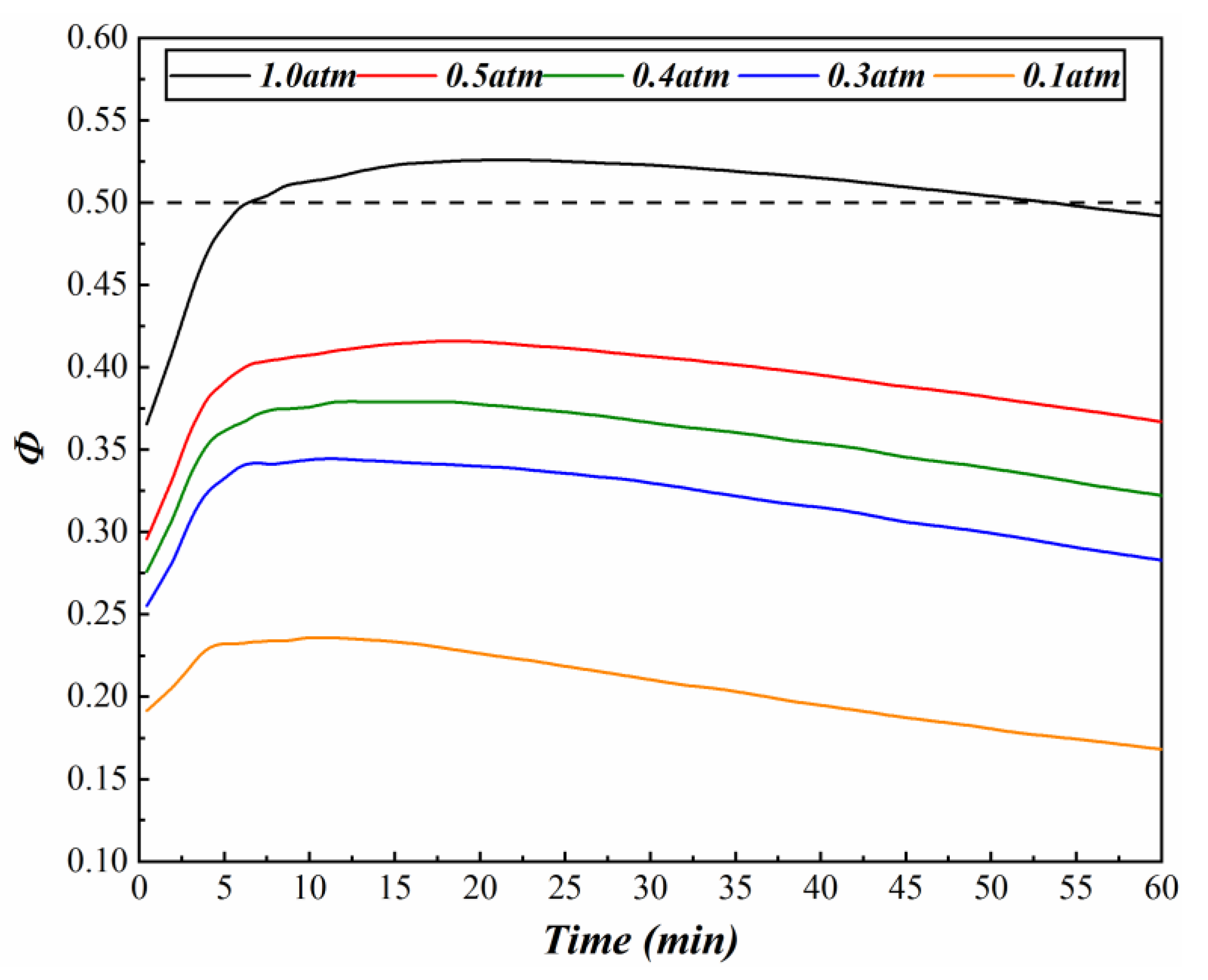
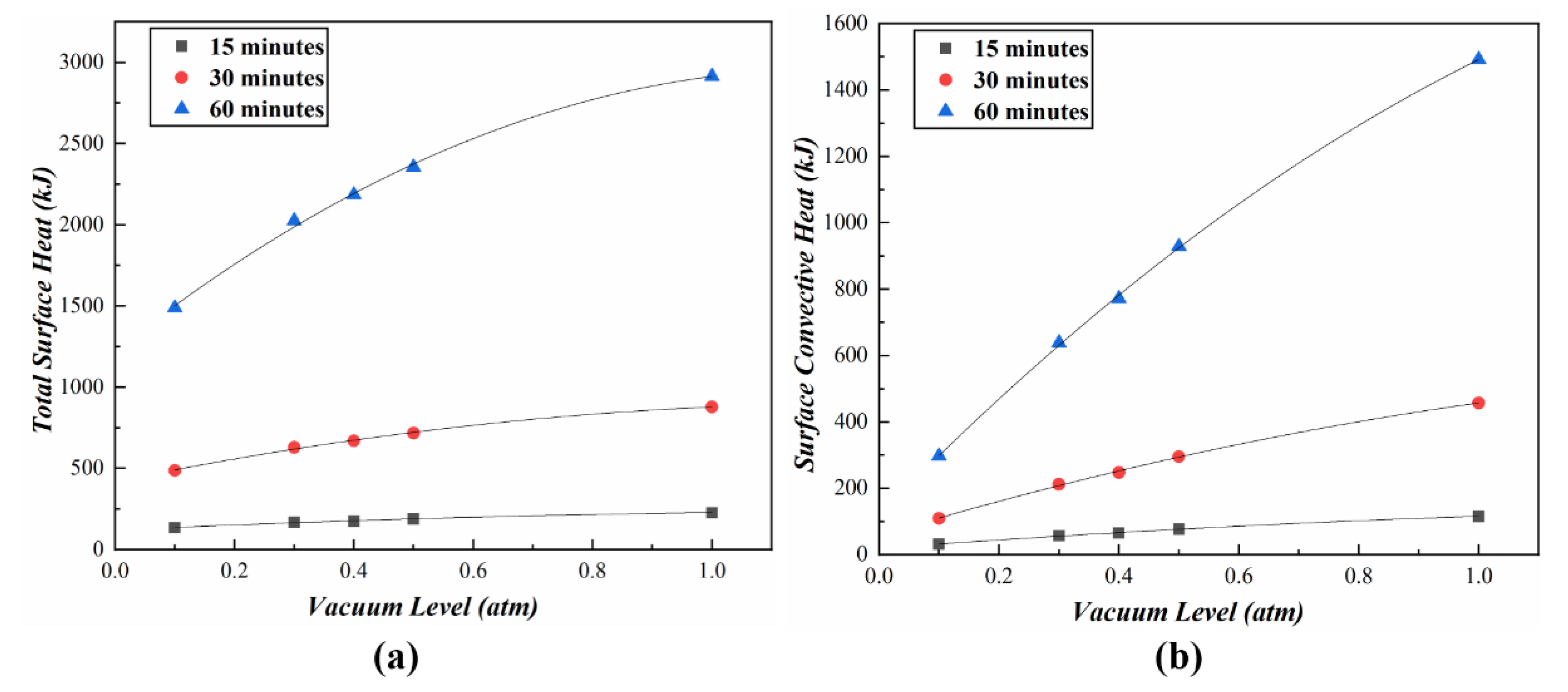
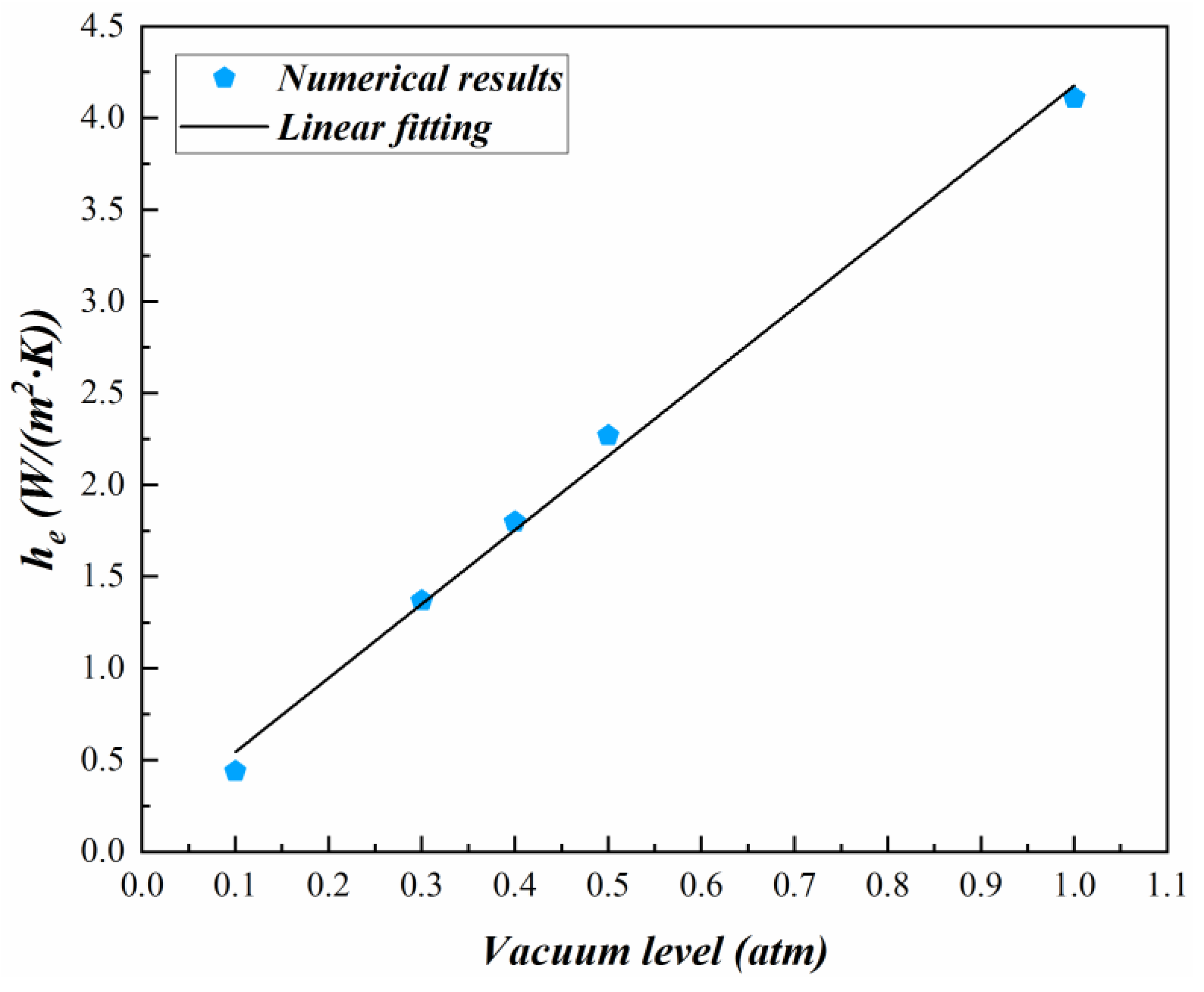
| Component | Density | Heat Capacity | Thermal Conductivity | Heating Power Per Volume | |
|---|---|---|---|---|---|
| (kg/m3) | J/(kg·K) | (W/(m∙K)) | (kW/m3) | ||
| Coils | 2554 | 832.5 | 3.6 | Primary magnet units and core-elevated magnet units | 154 |
| End magnet units | 152 | ||||
| Iron core | 7450 | 430 | 17 | 0 | |
| Epoxy | 1150 | 2410 | 0.4 | ||
| Flange | 2800 | 880 | 160 | ||
| Glass fiber | 2600 | 670 | 0.4 | ||
| Coarse | Medium (Segregated Solver) | Medium (Coupled Solver) | Fine | Experiment | ||
|---|---|---|---|---|---|---|
| Total number of grids (million) | 2.94 | 10.03 | 10.03 | 47.82 | / | |
| Temperature rise during heating process (K) | 10 min | 30.66 | 30.26 | 30.25 | 30.16 | 24.6 |
| 20 min | 52.99 | 52.65 | 52.62 | 52.55 | 47.63 | |
| 30 min | 69.37 | 69.02 | 68.98 | 68.93 | 65.91 | |
| 40 min | 82.28 | 82.04 | 82.02 | 81.99 | 80.14 | |
| 50 min | 93.25 | 93.11 | 93.1 | 93.09 | 93 | |
| 60 min | 101.72 | 102.21 | 102.25 | 102.41 | / | |
| 100 K temperature rise time (min) | 58.6 | 58.2 | 58.1 | 57.9 | 57.0 | |
| Heating time difference (%) | 2.8 | 2.1 | 1.9 | 1.6 | / | |
| Heating Time (min) | 10 | 20 | 30 | 40 | 50 | 60 |
|---|---|---|---|---|---|---|
| Primary magnet units | 30.1 | 51.3 | 66.5 | 78.0 | 87.4 | 95.6 |
| Core-elevated magnet units | 30.4 | 50.9 | 65.3 | 76.3 | 85.7 | 94.0 |
| End magnet units | 29.9 | 50.0 | 64.5 | 76.1 | 86.0 | 95.0 |
| Primary Magnet Units ID | M1 | M2 | M3 | M4 | M5 | M6 |
|---|---|---|---|---|---|---|
| (K) | 95.6 | 94.1 | 93.9 | 93.9 | 94.0 | 95.6 |
| Vacuum Level (atm) | 0.1 | 0.3 | 0.4 | 0.5 | 1.0 |
|---|---|---|---|---|---|
| Temperature rise time (min) | 50.5 | 54.4 | 55.7 | 57.6 | 66.0 |
| Heating time difference (compared to heating under 1.0 atm, %) | 23 | 18 | 16 | 13 | / |
| Vacuum Level (atm) | 0.1 | 0.3 | 0.4 | 0.5 | 1 |
|---|---|---|---|---|---|
| Time (min) | 10.9 | 11.3 | 17.2 | 18.3 | 21.0 |
| Vacuum Level (atm) | 0.1 | 0.3 | 0.4 | 0.5 | 1 |
|---|---|---|---|---|---|
| he (W/(m2∙K)) | 0.44 | 1.37 | 1.80 | 2.27 | 4.11 |
© 2020 by the authors. Licensee MDPI, Basel, Switzerland. This article is an open access article distributed under the terms and conditions of the Creative Commons Attribution (CC BY) license (http://creativecommons.org/licenses/by/4.0/).
Share and Cite
Mao, Y.; Yang, M.; Wang, T.; Wu, F.; Qian, B. Influence of Vacuum Level on Heat Transfer Characteristics of Maglev Levitation Electromagnet Module. Appl. Sci. 2020, 10, 1106. https://doi.org/10.3390/app10031106
Mao Y, Yang M, Wang T, Wu F, Qian B. Influence of Vacuum Level on Heat Transfer Characteristics of Maglev Levitation Electromagnet Module. Applied Sciences. 2020; 10(3):1106. https://doi.org/10.3390/app10031106
Chicago/Turabian StyleMao, Yiqian, Mingzhi Yang, Tiantian Wang, Fan Wu, and Bosen Qian. 2020. "Influence of Vacuum Level on Heat Transfer Characteristics of Maglev Levitation Electromagnet Module" Applied Sciences 10, no. 3: 1106. https://doi.org/10.3390/app10031106





